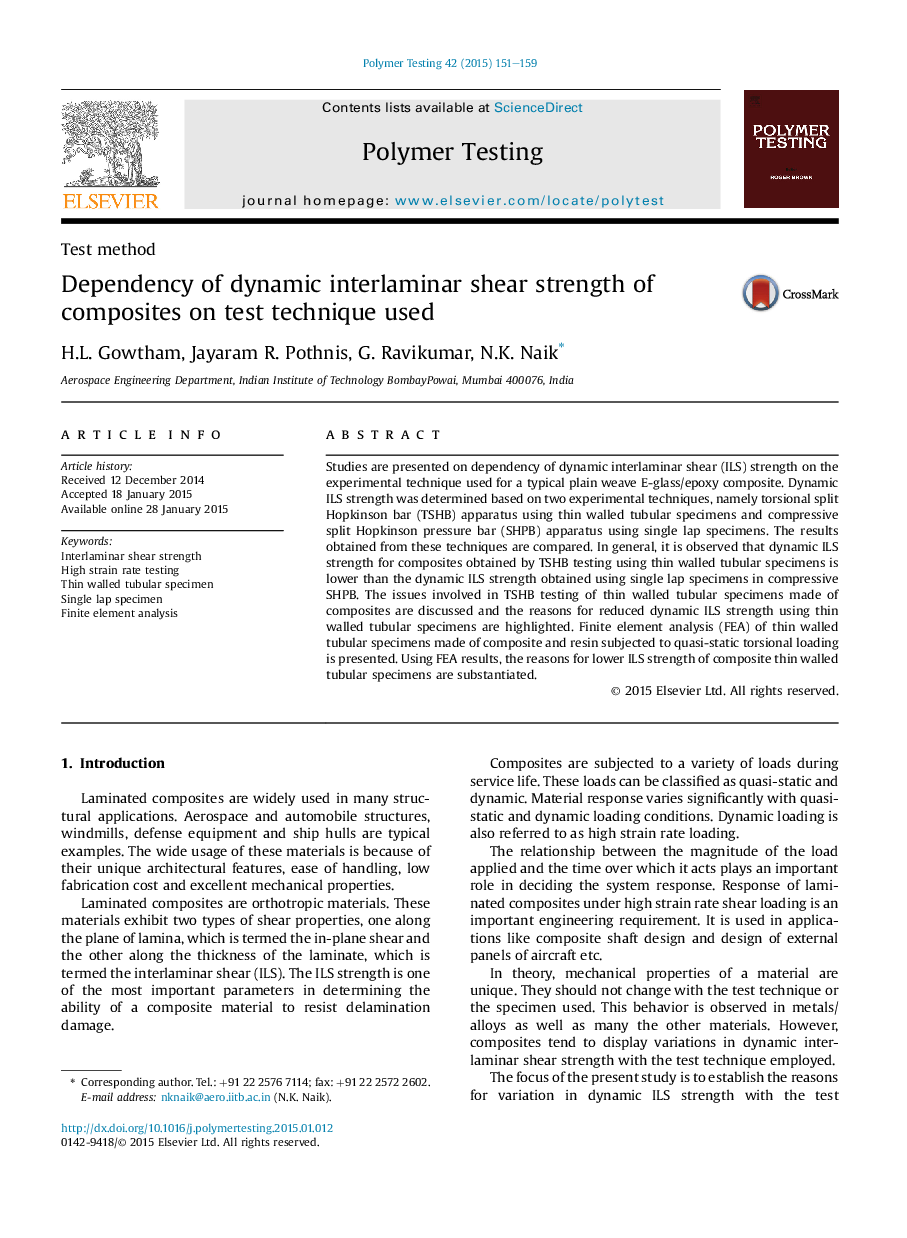| Article ID | Journal | Published Year | Pages | File Type |
|---|---|---|---|---|
| 5206204 | Polymer Testing | 2015 | 9 Pages |
Abstract
Studies are presented on dependency of dynamic interlaminar shear (ILS) strength on the experimental technique used for a typical plain weave E-glass/epoxy composite. Dynamic ILS strength was determined based on two experimental techniques, namely torsional split Hopkinson bar (TSHB) apparatus using thin walled tubular specimens and compressive split Hopkinson pressure bar (SHPB) apparatus using single lap specimens. The results obtained from these techniques are compared. In general, it is observed that dynamic ILS strength for composites obtained by TSHB testing using thin walled tubular specimens is lower than the dynamic ILS strength obtained using single lap specimens in compressive SHPB. The issues involved in TSHB testing of thin walled tubular specimens made of composites are discussed and the reasons for reduced dynamic ILS strength using thin walled tubular specimens are highlighted. Finite element analysis (FEA) of thin walled tubular specimens made of composite and resin subjected to quasi-static torsional loading is presented. Using FEA results, the reasons for lower ILS strength of composite thin walled tubular specimens are substantiated.
Related Topics
Physical Sciences and Engineering
Chemistry
Organic Chemistry
Authors
H.L. Gowtham, Jayaram R. Pothnis, G. Ravikumar, N.K. Naik,
